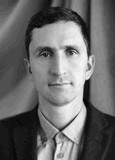Biomechanical parameters of start technique and starting acceleration in smooth and hurdling sprint in men
Ключевые слова:
sprint running, hurdling, sprint start and starting acceleration technique, 60 m run, 60 m hurdles run, spatial characteristics of running, biomechanical parameters of sprint running.Аннотация
Objective of the study was to compare the spatial characteristics of the start technique and starting acceleration in 60 m and 60 m hurdles in men at the stage of higher sportsmanship.
Methods and structure of the study. The main method was the analysis of biomechanical parameters of motor action technique. For this, data from the IAAF biomechanical report of the men's final races in the 60 m and 60 m hurdles at the 2018 World Indoor Athletics Championships were used [3, 4].
Results and conclusions. In men running 60 m and 60 m hurdles in the starting blocks in the body position on the “attention” command, the analysis of spatial characteristics revealed significantly significant differences in the angle between the torso and thigh of the front leg (p≤0.05). In the exit phase from the blocks, the greatest differences are observed in the angles of extension of the knee joints and the inclination of the lower leg of the fly leg (p≤0.05). At the first three steps of the starting acceleration for hurdlers, all the studied angles have large average values. These results confirm the need to take into account the differences in the start technique and starting acceleration in smooth and barrier sprints when developing special training tools and exercises.
Библиографические ссылки
Balandin S.I., Balandina I.Y., Zayko D.S., Dmitriev I.V. Biomehanicheskie parametri tehniki bega po distancii sprinterov finalistov chempionata mira [Biomechanical parameters of running technique of sprint athletes-finalists of the world championship]. Teoriya i praktika fizicheskoy kultury. 2022. No.8. pp. 3-5.
Balandin S.I., Balandina I.Y., Zayko D.S., Dmitriev I.V. Biomechanical parameters of running technique of sprint athletes-finalists of the world championship. Theory & Practice of Physical Culture. 2022. No.1. pp. 34-36.
Balandin S.I., Balandina I.Y., Zayko D.S., Maslennikov A.V. Sravnitelniy analiz osnovnih harakteristic tehniki preodoleniya distanciy 100 s/b and 110 s/b silneyshimi bareristami mira (Comparative analysis of the main characteristics of the technique of elite hurdlers (men and women). Teoriya i praktika fizicheskoy kultury. 2021. No.7. pp. 32-35.
Balandin S.I., Balandina I.Y., Zayko D.S., Maslennikov A.V. Comparative analysis of the main characteristics of the technique of elite hurdlers (men and women). Theory & Practice of Physical Culture. 2021. No.7. pp. 32-35.
Walker J., Pollitt L., Paradisis G.P., Bezodis I., Bissas A., and Merlino S. (2019). Biomechanical Report for the IAAF World Championships 2018: 60 Metres Hurdles Men. Birmingham, UK: International Association of Athletics Federations.
Walker J., Tucker C.B., Paradisis G.P, Bezodis I., Bissas A., and Merlino S. (2019). Biomechanical Report for the IAAF World Championships 2018: 60 Metres Men. Birmingham, UK: International Association of Athletics Federations.

Дополнительные файлы
Опубликован
Как цитировать
Выпуск
Раздел
Лицензия

Это произведение доступно по лицензии Creative Commons «Attribution» («Атрибуция») 4.0 Всемирная.
